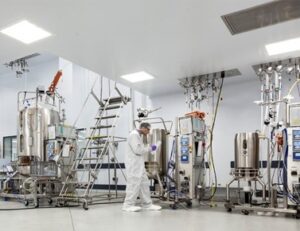Pharmaceutical Industry and its product categorization
Pharma Industries may be categorized into three parts:
Pharma Research and development (R&D) facilities.
Active Pharma Ingredient Industries (API).
Pharma Formulation Industries.
Pharmaceutical Industries & Formulation Facilities General Industrial categorization:
Pharma Industries and Formulation Plant structure: To run the pharma facility following are the major departments:
- Quality Assurance Department (QA)
- Production Department
- Quality Control Department (QC)
- Microbiology Department
- Engineering Department
- Warehouse Department
- Human Resources & Administration Departments (HR)
- Accounts & Finance
- Pharma OSD(Oral Solid Doses) Liquid/Ointments etc. Manufacturing Plants.
- Biotech (vaccines) Manufacturing Plant (Pharma Industries).
- Injectables Manufacturing Plant (Pharmaceutical Industries).

Pharmaceutical Industries Role:
the pharmaceutical industry plays a critical role in society by developing and producing drugs that improve people’s health and quality of life. In addition to the values mentioned earlier, pharmaceutical manufacturing plants also contribute to the following:
Quality Control: Pharmaceutical manufacturing plants are subject to strict regulations and standards, which require them to implement rigorous quality control processes. This ensures that the medications produced are safe, effective, and meet the highest quality standards.
Production Efficiency: Manufacturing plants implement various techniques and technologies to optimize the production efficiency, reducing costs and increasing productivity. This allows pharmaceutical companies to produce medications more efficiently and at a lower cost, making them more accessible to patients who need them.
Research and Development: Many pharmaceutical manufacturing plants have research and development facilities on-site, which allow them to innovate and develop new drugs and therapies. This is critical for advancing the field of medicine and addressing unmet medical needs.
Job Creation: Pharmaceutical manufacturing plants create job opportunities for a range of skilled professionals, from scientists and engineers to production workers and logistics specialists. This contributes to economic growth and development, both locally and globally.
Environmental Sustainability: Pharmaceutical manufacturing plants are also making efforts to reduce their environmental impact. This includes implementing sustainable practices such as using renewable energy sources, reducing waste and emissions, and implementing environmentally-friendly manufacturing processes.
In summary, pharmaceutical manufacturing plants play a critical role in the pharmaceutical industry by producing high-quality medications, advancing research and development, creating job opportunities, and contributing to environmental sustainability.

Categorization of Pharmaceutical Industries:
Pharmaceutical industries can be broadly categorized based on their focus and product portfolio. Here are some common categories of pharmaceutical industries:
Large Multinational Companies: These are the largest pharmaceutical companies that operate globally and have a diverse portfolio of drugs, including both branded and generic medications. These companies invest heavily in research and development and have a significant market presence.
Generic Drug Manufacturers: These pharmaceutical companies focus on producing generic drugs, which are equivalent to brand-name drugs but are sold at a lower price. Generic drug manufacturers do not have to invest in research and development, which allows them to produce medications at a lower cost.
Biotech Companies: Biotech companies specialize in developing and producing biological medications, which are complex molecules that are derived from living cells. These medications are used to treat a wide range of diseases, including cancer, autoimmune disorders, and rare genetic conditions.
Contract Manufacturing Organizations: These pharmaceutical companies specialize in manufacturing medications for other companies. They provide services such as formulation development, manufacturing, packaging, and distribution, allowing other companies to outsource their manufacturing needs.
Specialty Pharmaceutical Companies: These companies focus on developing and producing medications for specific disease areas or patient populations, such as rare diseases or oncology. These medications are often high-cost and require specialized distribution and support services.
Over-the-Counter (OTC) Drug Manufacturers: These companies produce medications that are available without a prescription and are used to treat minor ailments such as cold and flu symptoms, allergies, and pain relief.
These are just a few examples of the various categories of Pharmaceutical Industries. The pharmaceutical industry is diverse, and companies may fit into multiple categories depending on their focus and product portfolio.

Categorization of pharmaceutical plants:
Pharmaceutical plants can be categorized based on their primary function or type of manufacturing. Here are some common categories of pharmaceutical plants:
API (Active Pharmaceutical Ingredient) Manufacturing Plants: These plants produce the active ingredient that is the main component of a medication. This involves chemical synthesis, fermentation, or other processes to produce a pure form of the active ingredient.
Formulation Plants: These plants take the active ingredient produced by API manufacturing plants and formulate it into a finished dosage form such as tablets, capsules, or injectables. This involves mixing the active ingredient with other ingredients, such as fillers and binders, to create the final product.
Biologic Manufacturing Plants: These plants produce biologic medications, which are complex molecules derived from living cells. This involves a variety of specialized processes, such as cell culture, purification, and sterile filling, to produce the final product.
Sterile Manufacturing Plants: These plants produce medications that need to be sterile, such as injectables and ophthalmic products. This involves specialized manufacturing processes to ensure the product is free of contamination and maintains its sterility throughout its shelf life.
Packaging and Labeling Plants: These plants are responsible for packaging the finished dosage form of medications and applying the appropriate labeling. This involves various packaging formats, such as blister packs, vials, and bottles, and requires compliance with regulatory requirements for labeling and product information.
Contract Manufacturing Plants: These plants provide manufacturing services to other pharmaceutical companies, producing medications on their behalf. They may specialize in a particular type of manufacturing, such as API or biologic manufacturing, or offer a range of services.
These are just a few examples of the various categories of pharmaceutical plants. Pharmaceutical plants may also be categorized based on their size, location, ownership, and other factors.


2 thoughts on “Pharmaceutical Industries and their value”